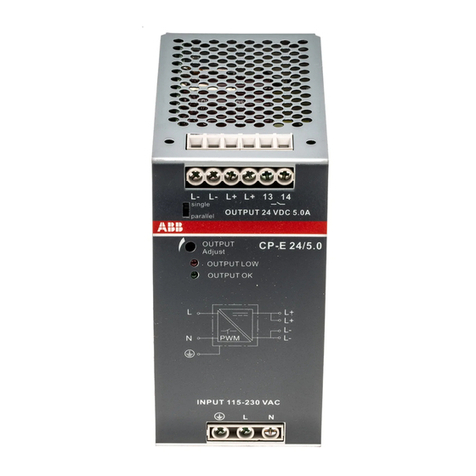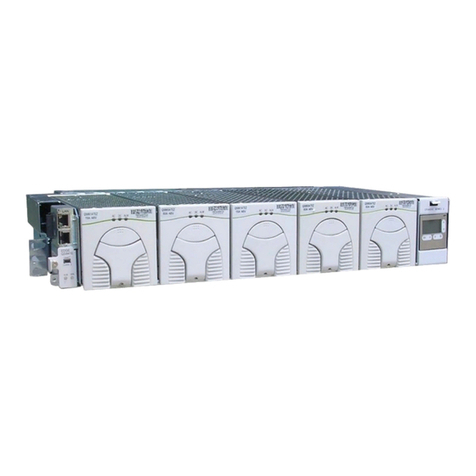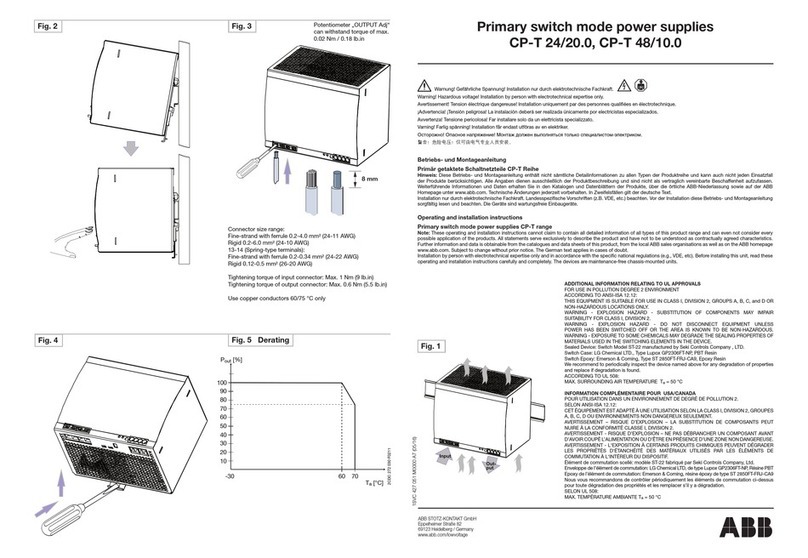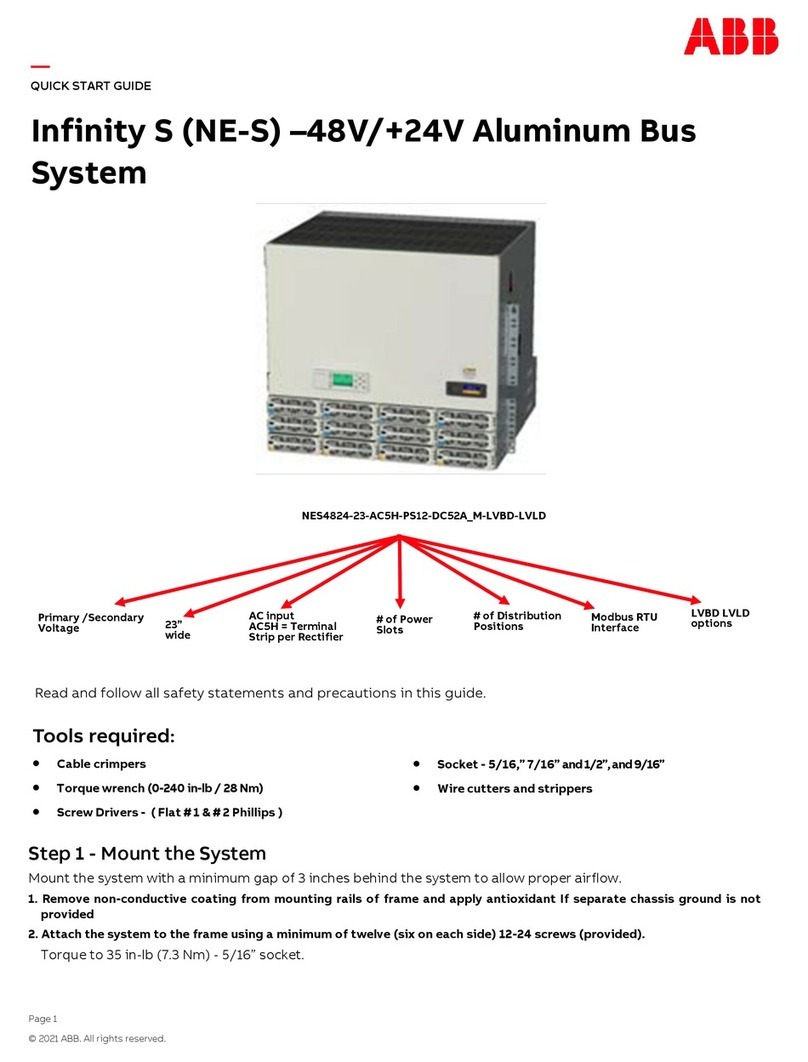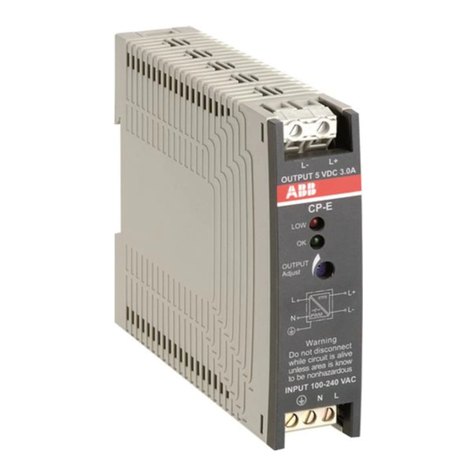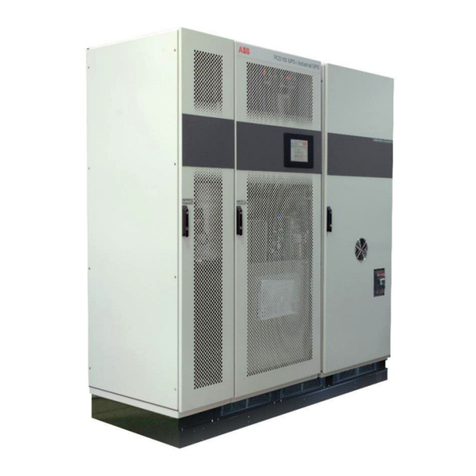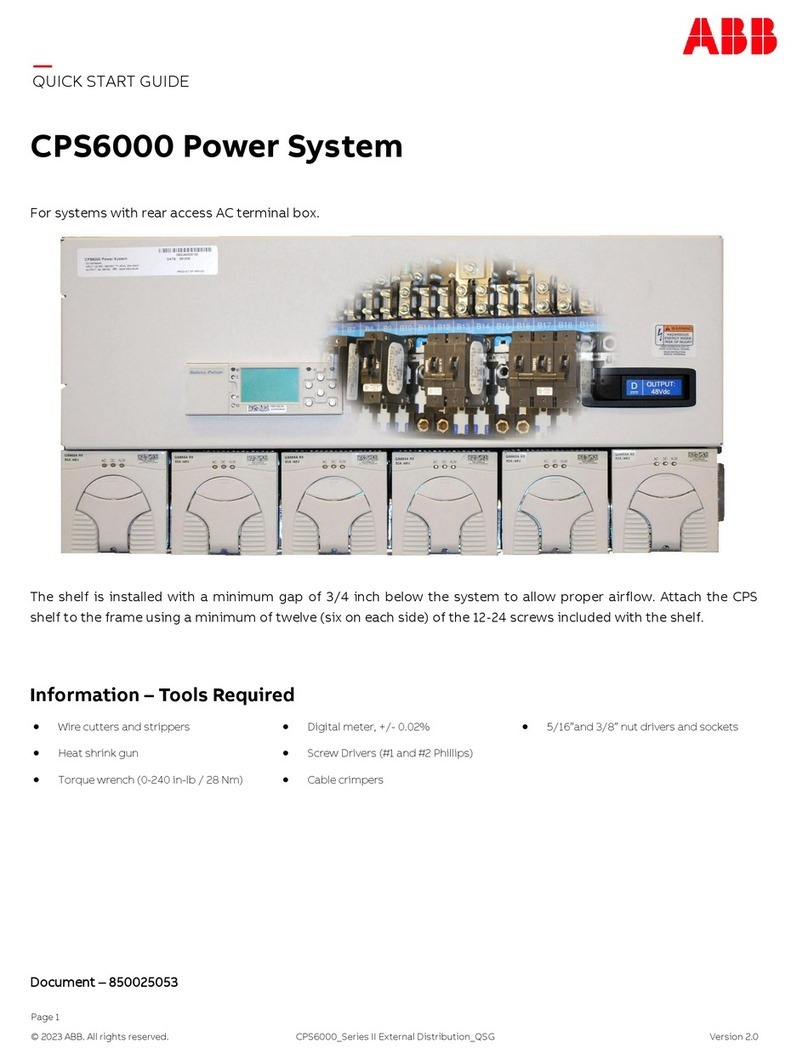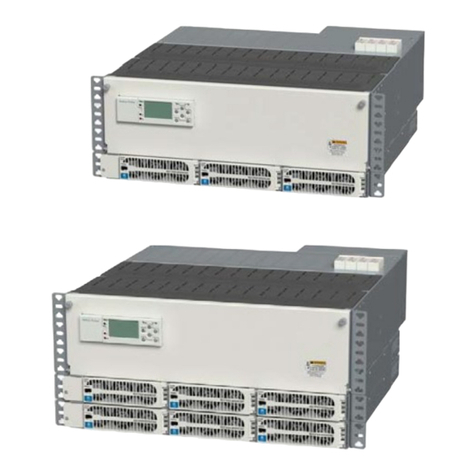Page 6
© 2021 ABB. All rights reserved. CP:S6000_External Distribution_IG Rev. 1.3
AC
• An accessible ac disconnect/protection device to remove ac power from the equipment in the event of an
emergency must be provided.
• AC branch circuits to this equipment must be protected with either fuses or circuit breakers sized as required by
the National Electric Code (NEC) and/or local codes. The maximum size of the over-current protector is based on
the rectifier type used. Refer to Table 1 for appropriate breaker to assure rating of equipment will not exceed 80%
of the value of the protector chosen.
• The equipment could be powered by multiple ac inputs. Ensure that the appropriate circuit protection device for
each ac input being serviced is disconnected before servicing the equipment. Do not disconnect permanent
bonding provisions unless all ac inputs are disconnected.
• High leakage currents are possible due to contribution from multiple AC input connections. Earth ground
connection is essential before connecting the ac source to the shelf. This connection must be achieved by
ensuring that the shelf is properly grounded as shown in the Installation Section.
• In enclosed equipment cabinets, the mounting framework must be connected directly to the cabinet ac service
ground bus. For applications in huts, vaults, and central offices, the framework must be connected to the system
integrated ground grid.
• CPS6000 outputs are not connected to earth. Earthing of rectifier outputs may be performed externally to the
shelf at a “ground window” or “mesh ground”. Reliable earthing of the DC return bus (DC reference Ground) and
the chassis ground should be performed.
WIRING
• For installations in the United States, Listed compression connectors shall be used to terminate field-wired
conductors, where required. For all installations, the appropriate connector is to be applied only to the correct
size conductor as specified by the connector manufacturer, using only the connector manufacturer's
recommended tooling or tooling approved for that connector.
• If the proper connector for the country of installation is not provided, obtain appropriate connectors and follow
manufacturer’s and all local requirements for proper connections. All national and local rules and regulations
should be followed when making field connections.
• Insulation on field-wired conductors should be rated no less than 90° Celsius. Wire conductor size should be sized
per electrical codes for 75° Celsius wire, and based on the ampacity of the associated protection device.
• Battery input cables must be dressed to avoid damage to the conductors (caused by routing around sharp edges
or routing in areas where wires could get pinched) and undue stress on the connectors.
• Alarm contacts on the office alarm connector are not fused in the controller; therefore, current limiting protection
for these contacts must be provided by external circuits. Maximum ratings for alarm connections are 60Vdc and
0.5 amperes. Exceeding these maximum ratings could result in fire or damage to the unit.
• Torque electrical connections to the values specified on Table 2.
DC PROTECTORS
• The D.C. outputs up to 250A are available. The DC output discharge currents shall not exceed 80% of their circuit
breaker or fuse rating.
• Fuse and circuit breaker loads must not exceed 80% of the fuse and/or circuit breaker current rating.
• The short circuit current capability of the battery input to the distribution panel must not exceed 10,000A.
• Installing fuses or circuit breakers not specified for use in this shelf may result in injury to service personnel or
equipment damage.
• The telecom-type (e.g., GMT type) fuses can produce sparks during interruption or clearing of a fault on a high
energy circuit. Use only fuses provided with safety caps for this type of circuit. Installing telecom-type fuses not
equipped with safety caps may result in injury to service personnel.



